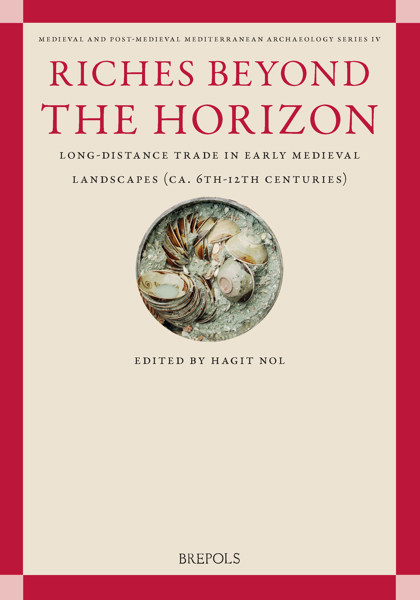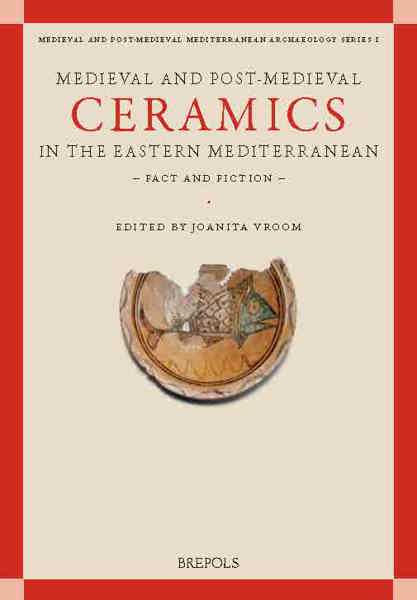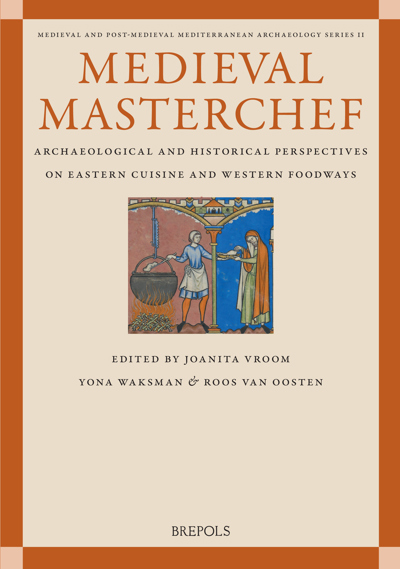
Explorations in Islamic Archaeology
Material Culture, Settlements, and Landscapes from the Mediterranean to Western Asia
Joanita Vroom, Hagit Nol (eds)
- Pages: 360 p.
- Size:178 x 254 mm
- Illustrations:14 b/w, 112 col., 17 tables b/w., 4 maps b/w
- Language(s):English
- Publication Year:2025
- € 80,00 EXCL. VAT RETAIL PRICE
- ISBN: 978-2-503-61872-2
- Paperback
- Available
- € 80,00 EXCL. VAT RETAIL PRICE
- ISBN: 978-2-503-61873-9
- E-book
- Available
Innovative perspectives on archaeological data from the Islamic world, ranging from present-day Spain to Turkey and Oman between ca. the 7th and the 20th century
Joanita Vroom is Professor of the Archaeology of Medieval and Early Modern Eurasia at the Faculty of Archaeology, Leiden University (The Netherlands). She specializes in Medieval and Post-Medieval archaeology in the eastern Mediterranean and the Near East, including the Byzantine, Islamic, Crusader, and Ottoman periods.
Hagit Nol is a Junior Professor of Islamic Archaeology and Art History at Goethe University Frankfurt (Germany). Her main interests are early Islam and economic history while her current research focuses on mosques in the 7th to the 9th century.
This volume presents contributions by leading scholars on various topics and aspects of Islamic Archaeology, a discipline which has recently seen the development of exciting new approaches to the study of the material culture of the Muslim world. This material culture was produced by and/or for Muslims, as well as by and/or for non-Muslims living under Islamic rule from the 7th century onward, in an expanding and ultimately vast area reaching from southern Europe to West Asia.
The contributions in this book focus on Jordan, Oman, Spain, Turkey, Lebanon, as well as Israel, and cover a timespan from the 7th century through the Mamluk period to the early 20th century. They highlight the archaeology of large Islamic centers in the past, but also of the material culture in smaller sites and peripheral regions. Special emphasis is paid to pottery as one of the main artifacts that carry information on past societies, but other finds and materials are discussed as well. The aspect of Islamic material culture which receives particular attention is ‘production’, specifically the production of clay vessels, glaze, mercury, and crops.
What unites the new approaches presented here is that Islam is understood as both a ‘religion’ and a framework for economic, cultural, and social networks and influence. In this perspective, the volume aims to offer students of Islamic archaeology, historians of Islam and archaeologists of different disciplines a glimpse of the state-of-the-art in current Islamic Archaeology
JOANITA VROOM (Series Editor)
Preface
HAGIT NOL & JOANITA VROOM (Volume Editors)
Introduction: Current trends in Islamic Archaeology
THEORY AND POTTERY
JOSÉ CRISTÓBAL CARVAJAL LÓPEZ
Islamization and ceramics: Assembling change and Con-Text
BETHANY J. WALKER
‘Made on Order for the Amir’: What was the function of Mamluk Barracks Wares?
ELENA SALINAS
Entanglements in the western Islamic lands: Early glazed ceramics of al-Andalus
SETTLEMENTS AND LANDSCAPES
JOANITA VROOM
All that glitters: Islamic material culture in Ephesus, western Turkey
HAGIT NOL
The archaeological narratives of Ramla from the 7th to the 11th century: Experimenting with Big Data
KATARÍNA MOKRÁNOVÁ & MARGREET L. STEINER
Material entanglements in the Early Islamic southern Levant (650-1000 CE): A view from the rural site of Tell Abu Sarbut, Jordan
VALENTINA VEZZOLI
Material culture and human landscape in Lebanon during the Islamic period: Baalbek and the Beqaa Valley
PETER M.M.G. AKKERMANS, MEREL L. BRÜNING & AHMAD ALGHIZAWAT
The grazing ground beyond the sown: Mamluk pastoralist settlement in Jebel Qurma, Black Desert, north-east Jordan
IRINI BIEZEVELD & BLEDA S. DÜRING
Quantifying the Late Islamic ooccupation peak: The case of the Upper Falaj al-Muʿtariḍ




